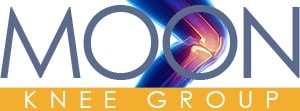How to Calculate Your ACL Retear Risk
Every surgically reconstructed anterior cruciate ligament can retear. The risk ranges from one or two percent to more than 20 percent.
The replacement ligament (graft) chosen for your surgery can significantly increase or decrease your chance of a retear.
Using the MOON Knee Group risk calculators in this section, you can estimate your retear risk for different grafts. The calculators are based on data from more than 3,500 patients in a long-term ACL reconstruction study.
Talk with Your Doctor
Calculate your expected failure based on the risk calculators and discuss with your doctor the advantages and disadvantages of each autograft type for you.
There is not enough data on using a quad tendon to include it in a calculator. Your doctor may still recommend this for you based on their experience and your injury and post-surgery goals.
What Are the ACL Graft Choices?
The graft used in ACL reconstruction surgery is either an autograft or allograft.
Autografts are taken from your patellar tendon, hamstring or quad. You might hear this referred to as harvesting. This creates a second surgical location.
In allografts, the graft is taken from one of those locations on a cadaver.
Graft type or location does not change the functionality you can achieve with your reconstructed ACL. It does change your retear risk.
A Clear Finding From the Research:
Allografts have three times the retear risk than autografts. If you are 22 or younger, the difference is significant.
What Data Do You Enter?
The calculators use your height, weight, sex, sport and level of activity to predict your retear risk with different grafts. Your age, as you can read below, can have a critical impact on your retear risk for reconstruction using an allograft.
No identifying information from the forms is requested, collected or stored.
Injury can stretch your knee ligaments. This looseness (laxity) impacts your retear risk. You will need this information to interpret your retear risk. Your surgeon will determine in pre-surgery evaluation whether you have normal or high-grade laxity of your knee.
What to Know About Retear Risk
Retear risk should be your most important graft choice criteria.
- No graft type provides a performance or function advantage. You won’t be faster, quicker or jump higher because of the graft type.
- Return to sport and activity levels are the same. No graft type is more likely to get you back on the field or court.
- Side effects are rare for all graft types.
- With all graft types, you can reduce your retear risk by fully completing rehabilitation and taking part in return-to-sport training. But you cannot make up for the retear risk of your graft choice in training.
How Much Difference in Retear Risk Matters?
When comparing graft types using the ACL retear risk calculators, use the absolute difference. That is, subtract the lower number from the higher number.
How much difference in retear risk is significant? When the absolute difference between retear risks is:
- Less than three: Choose either graft type. On the calculator, both grafts are shown in green.
- Between three and five: Favor the lower risk graft. On the calculator, the higher risk graft is shown in yellow.
- Above five: Eliminate the higher risk graft. On the calculator, the higher risk graft is shown in red.
Percentage Difference is Misleading:
- If one graft type has a four percent chance of a retear, you have a 33 percent higher failure risk compared to a graft type with a three percent risk. But the absolute difference of one is insignificant, just like when one graft is nine percent and the other 10.
- If one graft has a 12 percent retear risk and another 16 percent, the percentage difference is also 33 percent. But the absolute difference of four is cause for concern.
Allografts Are Three Times More Likely to Retear
Many surgeons no longer use allografts (where the graft comes from a cadaver) in young patients. Why? Allografts are three times more likely to retear than autografts.
This difference is significant for those 22 and younger. Every competitive athlete younger than their mid-twenties should elect ACL reconstruction using autograft (with a replacement ligament from your body).
For those in their mid-twenties and older, the gap between the two methods becomes so small that it is insignificant. And those older than their mid-twenties suffer fewer ACL retears overall. Research so far provides no conclusive reason for this.
Rehabilitation Can Reduce Retear Risk 40 to 60 Percent
Regardless of graft method and source, you can reduce your risk of a repeat ACL tear by 40 to 60 percent.
How? By completing a MOON Knee evidence-based rehabilitation program coupled with return-to-sport training. (The MOON knee research program and rehabilitation guidelines are funded by federal grants, distributed at no cost and widely used.)
All ACL reconstruction surgery patients should fully complete their rehabilitation and training programs before resuming normal activity and especially when returning to a sport.
Was This Content Helpful?
Share via:

